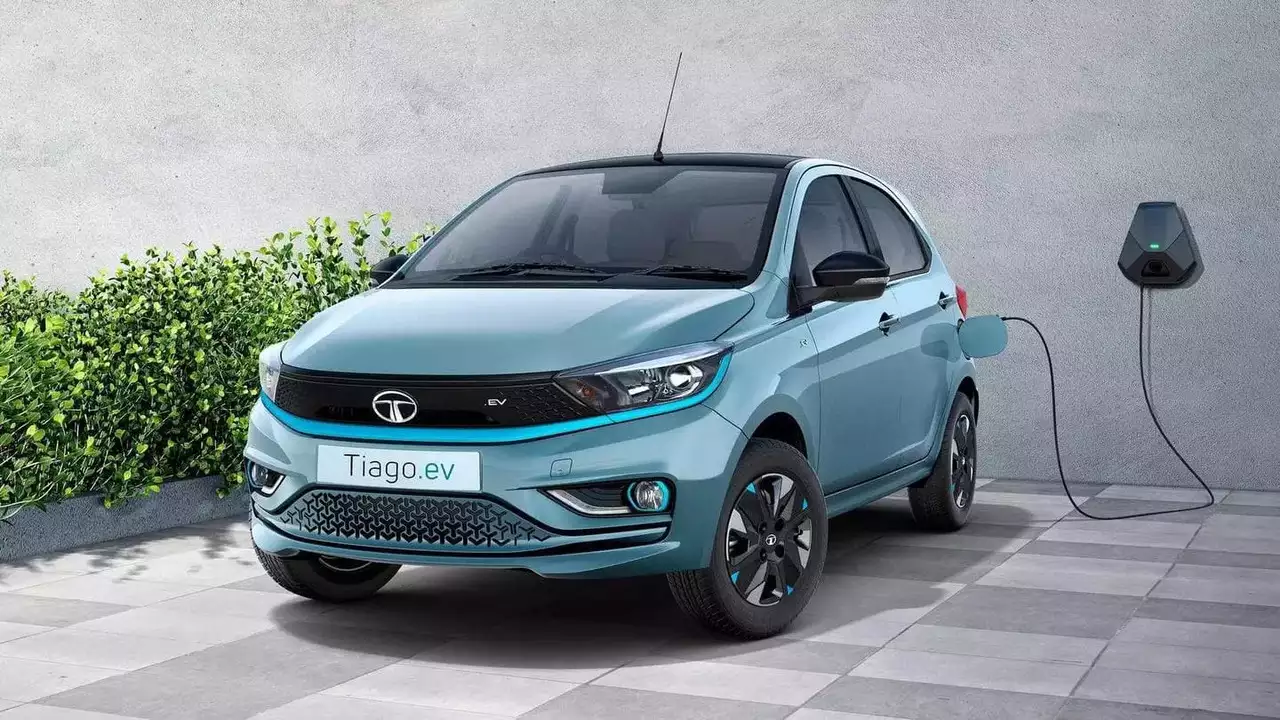The Indian automotive landscape is witnessing a silent revolution, with electric vehicles (EVs) slowly but surely capturing the market’s imagination. Leading the charge is the Tata Tiago EV, a subcompact hatchback aiming to make EVs accessible and desirable for the masses. Let’s delve into what makes this car a potential game-changer.
Affordability: A Disruptive Edge
One of the biggest barriers to EV adoption in India is cost. The Tiago EV tackles this head-on with a starting price tag of ₹7.99 lakh (ex-showroom Delhi), making it the most affordable electric car in the country. This strategic pricing opens doors for a wider segment of buyers, potentially accelerating the shift towards electric mobility.
Range and Performance: Finding the Sweet Spot
The Tiago EV comes with two battery pack options: 19.2kWh and 24kWh. The smaller pack offers a claimed range of 250km, while the larger one promises 315km. While these figures might not match some high-end EVs, they are perfectly suited for daily commutes and intra-city travel in India. The electric motor delivers adequate power and torque, ensuring a smooth and zippy driving experience.
Design and Features: A Familiar Face with Modern Touches
The Tiago EV borrows its design cues from its petrol counterpart, offering a familiar yet modern look. The blanked-off grille with the signature tri-arrow pattern distinguishes it as an EV. Inside, the cabin is spacious and comfortable, featuring a 7-inch touchscreen infotainment system, automatic climate control, and a digital instrument cluster. While not the most luxurious, the interiors offer a practical and user-friendly experience.
Charging Convenience: Adapting to Different Needs
The Tiago EV supports various charging options. A standard 15A plug point can charge the car overnight, while a 3.3kW or 7.2kW AC fast charger can significantly reduce charging time. Additionally, DC fast charging capability allows for a 10-80% charge in just 57 minutes, making long-distance travel more feasible.
Sustainability and Environmental Impact
The most significant advantage of the Tiago EV lies in its eco-friendly nature. By opting for electric mobility, drivers contribute to reducing carbon emissions and air pollution, crucial steps towards a sustainable future. Moreover, the Tiago EV’s running costs are significantly lower compared to petrol-powered cars, offering long-term financial benefits.
Challenges and Future Potential
Despite its strengths, the Tiago EV faces challenges. The charging infrastructure in India is still evolving, and range anxiety remains a concern for some potential buyers. Additionally, the car’s performance might not appeal to driving enthusiasts seeking high-speed thrills. However, Tata Motors is actively expanding its charging network and continuously improving its EV technology.
Conclusion: A Spark Igniting Change
The Tata Tiago EV is not just a car; it’s a symbol of India’s electric mobility ambitions. Its affordability, practicality, and eco-friendly nature make it a compelling proposition for a growing segment of car buyers. While challenges remain, the Tiago EV has the potential to spark a revolution, paving the way for wider EV adoption in India and contributing to a cleaner and more sustainable future.




